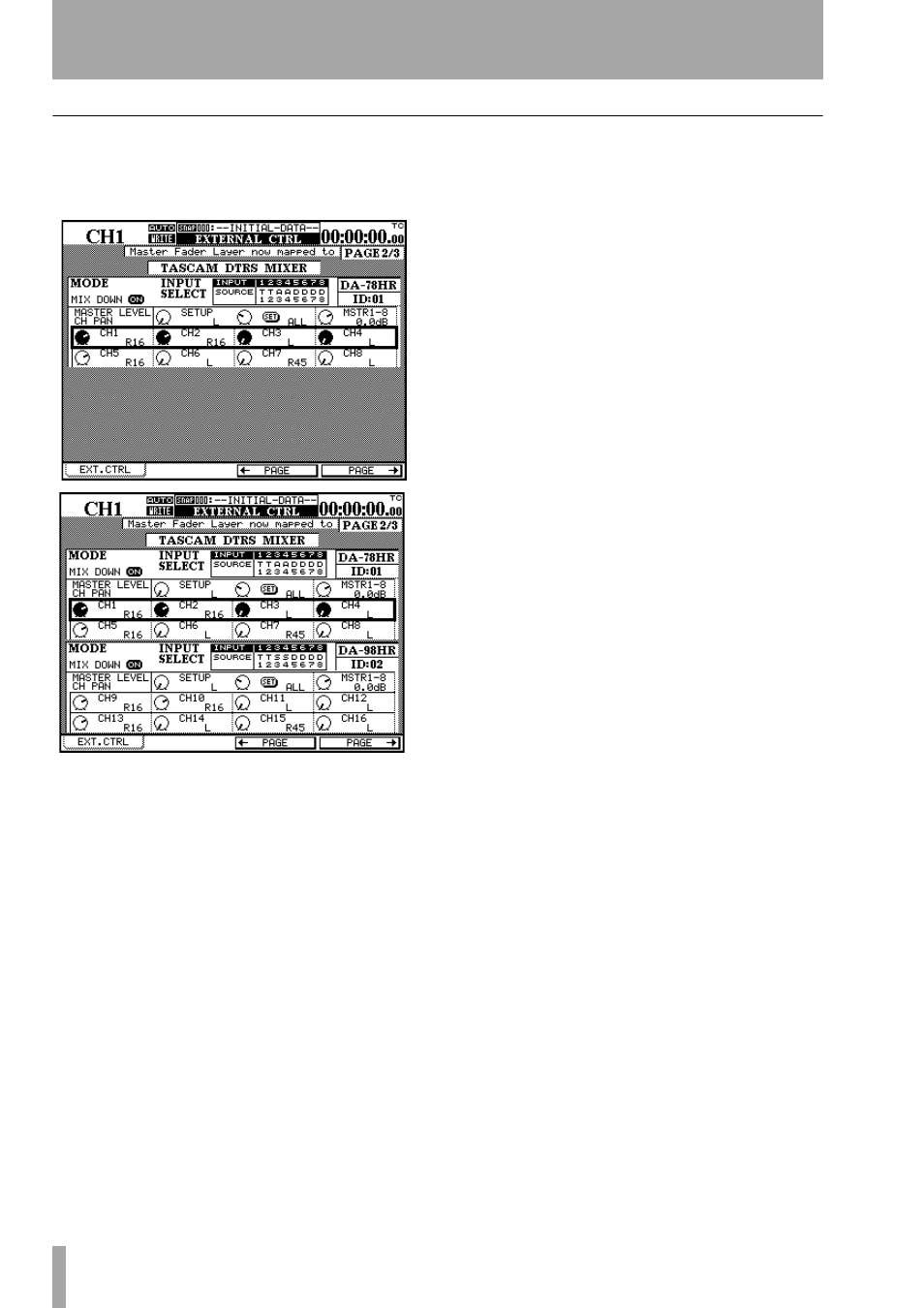Dtrs mixer, 11 – machine control/location—dtrs devices – Teac DM-24 User Manual
Page 90

11 – Machine Control/Location—DTRS devices
90
TASCAM DM-24 Reference Manual
DTRS mixer
In addition to the screen just described, there is an
on-screen output mixer which controls the internal
mixer of up to two DTRS units.
This is selected as a separate item in the list of
devices to be controlled by the DM-24 (
DA-98HR
Mix
). If this item is not added to the list of controlla-
ble devices, it will not be possible to make these
mixer settings described here, even if the appropriate
DTRS units have been added to the list of controlla-
ble devices.
See the DTRS documentation for full details of how
the mixdown mode functions with each model.
If more than one DTRS unit has been displayed in
this way, the screen is split into two, with two “top
rows”, etc.
The
INPUT SELECT
section at the top of each half-
screen allows the assignment of sources to channels.
Use the cursor keys, dial, and
ENTER
key to change
these assignments. For DA-78HR units, these can be
selected as Track (
T
), Digital (
A
) or Analog (
A
) and
for DA-98HR units, they can be Track (
T
), Digital (
D
)
or Slot (
S
).
The on-screen
MIX DOWN
button controls the mix-
down mode of the DTRS unit.
In the first row of each half-screen, POD 1 allows the
setting of a master PAN value, with a
SET
button to
confirm the setting for a scope set by POD 2 (
ALL
,
ODD
,
EVEN
,
1-8
and
9-16
).
Also in the first row, POD 3 is used to control the
overall output master level for the first eight channels
(the first unit), and POD 4 does the same for the sec-
ond eight channels (the second unit).
The PODs in the remaining rows of the half-screen
are used to control the pan positions of the outputs.
The master layer faders and
MUTE
keys are used to
control the DTRS mixer when this screen is active
(modules 1 through 8 control the first unit, and 9
through 16 control the second unit). While this is
screen active, and the master layer is selected, the
MASTER
indicator flashes, as do the
MUTE
keys of
the modules.
